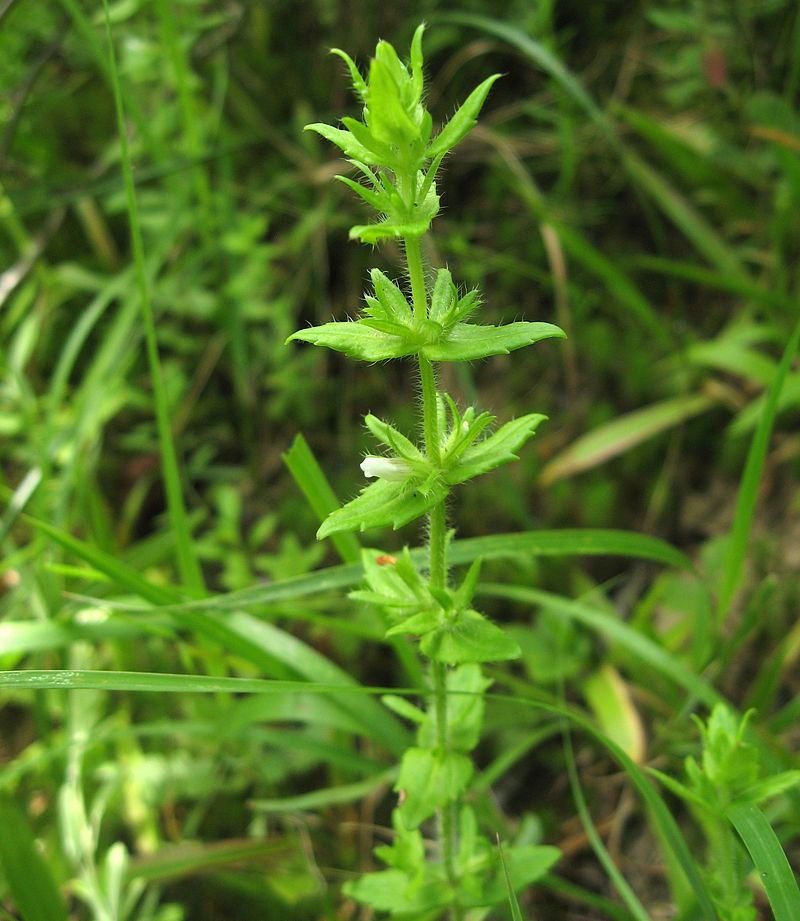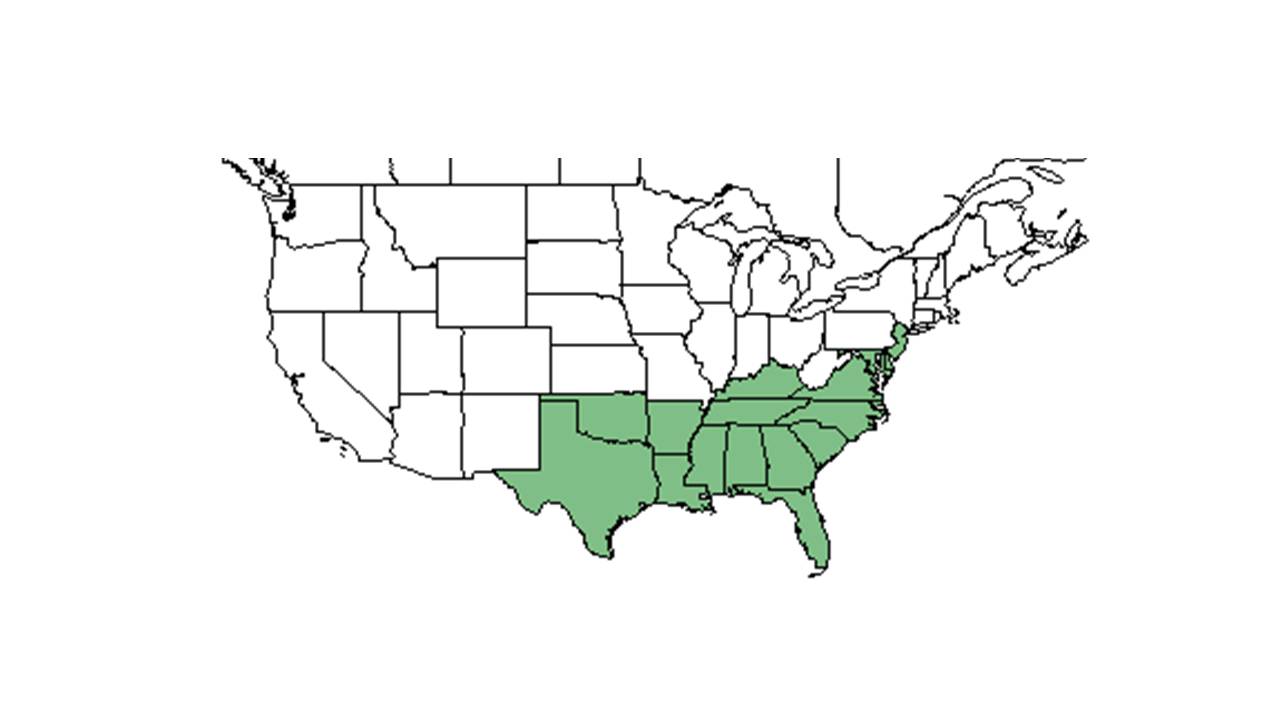Difference between revisions of "Sophronanthe pilosa"
(→Ecology) |
|||
| Line 19: | Line 19: | ||
Common name: shaggy hedgehyssop | Common name: shaggy hedgehyssop | ||
| − | |||
| − | |||
==Taxonomic notes== | ==Taxonomic notes== | ||
Synonyms: ''Gratiola pilosa'' Michaux; ''Tragiola pilosa'' (Michaux) Small & Pennell var. ''typica''; ''Tragiola pilosa'' (Michaux) Small & Pennell | Synonyms: ''Gratiola pilosa'' Michaux; ''Tragiola pilosa'' (Michaux) Small & Pennell var. ''typica''; ''Tragiola pilosa'' (Michaux) Small & Pennell | ||
| Line 47: | Line 45: | ||
<!--===Diseases and parasites===--> | <!--===Diseases and parasites===--> | ||
| − | ==Conservation and | + | ==Conservation and management== |
==Cultivation and restoration== | ==Cultivation and restoration== | ||
==Photo Gallery== | ==Photo Gallery== | ||
Revision as of 19:36, 7 July 2016
| Sophronanthe pilosa | |
|---|---|

| |
| Photo by Mason Brock Wikimedia Commons | |
| Scientific classification | |
| Kingdom: | Plantae |
| Division: | Magnoliophyta - Flowering plants |
| Class: | Magnoliopsida – Dicotyledons |
| Order: | Scrophulariales |
| Family: | Plantaginaceae |
| Genus: | Sophronanthe |
| Species: | S. pilosa |
| Binomial name | |
| Sophronanthe pilosa Michx. | |

| |
| Natural range of Sophronanthe pilosa from USDA NRCS Plants Database. | |
Common name: shaggy hedgehyssop
Contents
Taxonomic notes
Synonyms: Gratiola pilosa Michaux; Tragiola pilosa (Michaux) Small & Pennell var. typica; Tragiola pilosa (Michaux) Small & Pennell
Description
This description came from Gratiola pilosa in Radford (1964) and S. pilosa was listed as a synonym. "Leaves opposite, sessile, often obscurely to strongly glandular-punctate. Flowers solitary in the axils of leafy bracts, a pair of bractlets usually immediately below the calyx. Sepals 5, subequal; corolla small; the upper 2 stamens fertile, the lower 2 filaments rudimentary or absent, anther sacs usually transverse to flower axis, surpassed by expanded, membranous connective (or anthers normal in no. 1). Capsules ovoid to globose, glabrous." - Radford et al 1964
"Stiff, erect, usually unbranched perennials, 1-7 dm tall, the stem 1-2 mm in diam., pilose. Leaves ovate to ovate-lanceolate, 1.2-2 cm long, 5-11 mm wide; entire or irregularly serrate, pilose. Flowers sessile or subsessile, pedicels 1 mm or less long; sepals linear or linear-lanceolate, 3-7 mm long, subequal, pubescent, exceeded by the linear bractlets; corolla white or shaded with lavender, 6-8 mm long. Capsule conical, 4-5 mm long." - Radford et al 1964
Distribution
Ecology
Habitat
This species usually grows in wet areas near the borders of swamps, bogs, ponds, and within floodplains (FSU Herbarium). S. pilosa has also been spotted in open scrub, moist pine barrens, pine flatwoods, live oak hammocks, and turkey oak-longleaf pine-blackjack oak woods (FSU Herbarium). It has been observed to grow in drying and moist loamy sands, sandy peat, and wet peat (FSU Herbarium). This species also occurs in human disturbed areas such as trails, planted slash pine woods near powerline corridors, roadsides, old pastures, swamp clearings, bog clearings, woodland clearings, flatwood clearings, disturbed cypress domes, and ditches (FSU Herbarium). Associated species includes Pinus, Hypericum, Magnolia, Nyssa, Pinchkneya, Liquidambar, Quercus virginiana, Justicia, Calopogon, Habernaria, Eriocaulon, Carex, Quercus falcata, Pinus palustris, Pinus elliottii, Quercus nigra, Gordonia lasianthus, Cyrilla, Magnolia virginiana, and Quercus marilandica (FSU Herbarium).
Phenology
This plant has been observed flowering from May through August and fruiting from June through November (FSU Herbarium).
Fire ecology
Has been found to occur in annually burned boggy draws in pinelands (FSU Herbarium).
Conservation and management
Cultivation and restoration
Photo Gallery
References and notes
Florida State University Robert K. Godfrey Herbarium database. URL: http://herbarium.bio.fsu.edu. Last accessed: June 2014. Collectors: Loran C. Anderson, A. H. Curtiss, Robert K. Godfrey, Grady W. Reinert, O. Lakela, J. N. Triplett, Jr., C. Jackson, Robert Kral, Mabel Kral, Grady W. Reinert, Robert L. Lazor, A. G. Shuey, R. A. Norris, and R. F. Doren. States and Counties: Florida: Bay, Clay, De Soto, Dixie, Duval, Franklin, Gadsden, Gulf, Hamilton, Hernando, Hillsborough, Jackson, Leon, Levy, Liberty, Madison, Marion, Nassau, Orange, Osceola, Okaloosa, Polk, Putnam, Santa Rosa, Taylor, and Wakulla. Georgia: Thomas.
Radford, Albert E., Harry E. Ahles, and C. Ritchie Bell. Manual of the Vascular Flora of the Carolinas. 1964, 1968. The University of North Carolina Press. 940. Print.